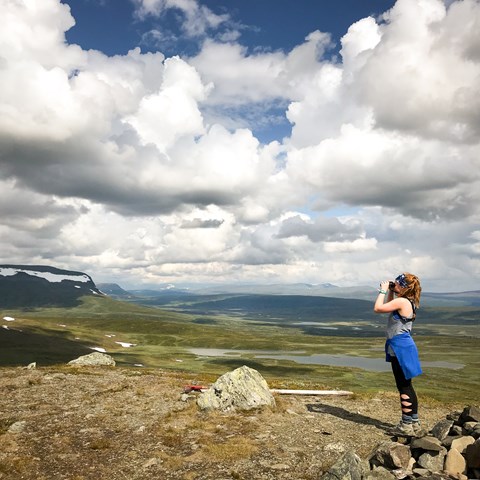---
You can find information about the outline of the course in summer 2023 below. The planning for the course in summer 2024 is currently underway, and this page will be updated once the structure is finalized.
---
This year's study trip takes place in Northern Scandinavia. Along the way, we highlight what natural resource utilization looks like and what conflicts can arise when several interests collide on the same land.
The course begins in Umeå and the first course week focuses on various aspects of sustainability and provides an introduction to how natural resources have been used throughout history up to the present day.
During the week, we make short excursions in the vicinity of Umeå, among other things to the forests around Vindeln. A visit to the salmon ladder in Stornorrfors, where this year's smolt count is in full swing, gives you the opportunity to learn more about the work with the conservation of Vindelälven's salmon. One day is devoted to the environment of the Gulf of Bothnia and a visit to Norrbyskär where the sawmill industry flourished during the early 20th century.
Sustainable use of watercourses and sustainable fishing is one of the course's themes and it is highlighted net we stop at the rivers exploited for hydropower in the north and reflect on the effects of hydropower on fishing and outdoor life.
Focus on the green industrial investments
Under the theme of forests and forestry, we experience modern industrial forestry, natural forests, traces of historical use and ecological restoration in the form of nature conservation burning and restoration of waterways that were used for rafting.
We also highlight sustainability aspects of wildlife management. We will hike through natural forest environments and visit forests where land use conflicts are ongoing. We visit reindeer herding Sami people, new and historic mines and discuss the impact of wind power on the landscape. This year, we are putting special focus on the green industrial investments in the north and will, among other things, visit the Aitik mine (Europe's largest open-pit mine) and areas set aside for compensation of lost natural values during the mine's expansion.
During the study trip, we stay a few days in Abisko, where we have mountains and arctic environments as our theme. We discuss how climate change may change the conditions for people, animals and plants. We go on to Narvik where the mountains meet the sea and discuss sustainable use of marine environments.
